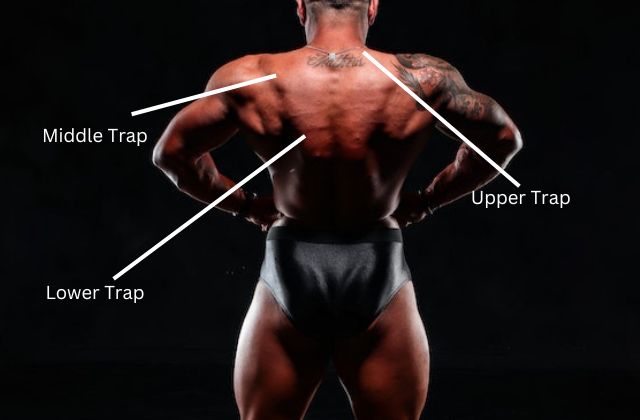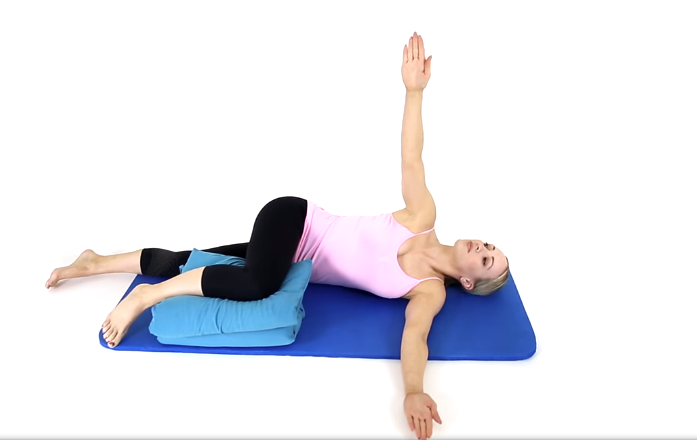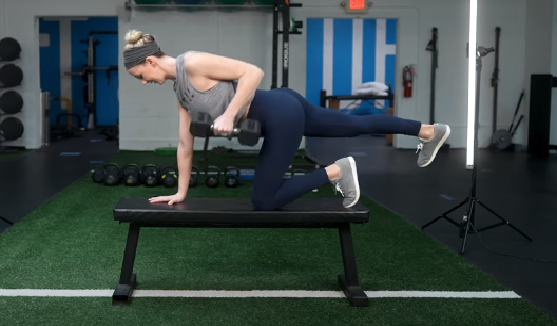Cable shrug is one of the traditional exercises that bodybuilders have relied on for decades, as they rely on doing it using an Olympic barbell, and with the advent of a cable machine and so on, the cable has become the best alternative to dumbbells and barbells because it provides perfect grip and makes you get a greater range of motion .
If you are seeking to develop shoulder flexibility and trapezius explosiveness, there is no doubt that the cable shrug exercise will be a great addition to your upper body muscle training routine, especially with exercises that target the upper back muscles.
In this post, you will learn how to properly shrug cables. You will also learn about some mistakes that you should avoid, as well as some variations. Finally, you will know how to combine this exercise with other exercises or in your own training program.
What is Cable Shrug?
The Cable Shrug is one of the variants of trapezius shrug exercises, which is done through a cable machine. It is a strength exercise, it isolates and targets the upper back muscles, including the neck, and also hits the shoulders. It is relied upon to explode the traps horizontally and to improve shoulder flexibility.
- Mechanics : Isolated
- Force : Pull
- Utility : Auxiliary

Cable Shrug Muscle Worked
The Cable Shrug targets the traps mainly because it is an isolation exercise for these muscles. The traps work with the movement of the shoulder blades so that the weight is pulled by shrugging your shoulders and contracting the traps with each repetition.
Trap (upper fibers):
- It helps to raise the shoulder blades and rotate them upwards, and helps to extend the neck, and it works mainly with cable shrugs more than the other parts of the traps (medial and lower).
Trap (middle fibers):
- The role of the middle fibers lies in advancing (retracting) the shoulder, working to pull the shoulder blades.
Traps (lower fibers):
- The fibers of the lower traps assist the upper fibers and their role lies in lowering and assisting in upward rotation of the scapula.
Trapezius Movement With Shoulders

Cable Shrug Proper Form
The clean form is what helps the snares to operate effectively, so according to “István Javorek”(Fitness Instructor), the rules for effectively executing a shrug are as follows:
- Head position: The chin is always fixed between your shoulders, your eyes look two or three yards in front of you directly above the ground, your head should not move forward or backward during the exercise.
- Shoulder position: turned in.
- Elbows: turned out and locked straight.
- Knee Position: Fixed, never straighten your feet during shrugs.
Cable Shrugs benefits
- Increase shoulder muscle activity
- Traps are operated and strengthened well
- Helps to strengthen the grip
- It contributes to the growth of the upper body muscles and stimulates them to be active
- Help improve performance with weight-bearing exercises such as deadlifts, squats, and jerks
How To Perform Cable Shrug
The Cable Shrug is a very easy exercise, all you have to do is provide the correct form and try to constantly develop your performance, so in order to get a good workout, try to follow these steps:
- Attach the cable machine in a low position.
- Decide if you want to go with an ez-bar or rope grip it’s up to you.
- Pull the cable grip to you, one step away from the machine.
- Keep your feet shoulder-width apart, knees slightly bent and kept stationary.
- Keep your elbows pointed outward, your shoulders circled inward, and your arms straight down.
- Now pull up the cable by pulling the shoulder blades up and back, contracting the traps with each repetition.
- Lower your shoulders back to the previous position, then pull up again, and so on.
Tips for improving performance:
- Keep your hands neutral at all times, that is, do not pull the cable with your fists. All you have to do is hold the cable tightly and pull it up by lifting your shoulders up and back.
- Try to feel the tension of your muscles before the start of the repetition and keep your muscles ready and engaged throughout the exercise.
- Try to take advantage of the range of motion available to you as much as possible, the more you pull your shoulders up well, the more effective the exercise.
Cable Shrugs mistakes
Some beginners pull the weight with the assistance of their hands:
You must keep your hands neutral because the exercise targets the traps, so you must lift the weight by shrugging and lowering the shoulders.
Going with heavy weights:
If you are a beginner, going with light or medium weights will be a good thing because you will gradually build muscle strength and reduce the risk of injury or stiffness of the trap muscles after exercises.
You don’t allow your muscles to recover long enough.
You need to give your muscles a rest if your goal is to build the muscles of the traps. Shrugs will be effective, but try to do them two to three times a week and allow your muscles to recover at least 24 to 48 hours.
Back bending while pulling the weight.
This mistake reduces the quality of the exercise and does not help build the muscles properly because the movement of the shoulders must be perpendicular to the ground in order to be able to contract the muscles of the traps and extend them well.
How to integrate shrug exercises to your workout routine?
If you follow a pre-training program, it will be easy to add shrugs exercises to your training routine so that you can add them along with shoulder exercises or back exercises, for example when you finish compound exercises and exercises that require some energy, you can conclude your session with cable shrug exercise, or you can start your workout with shrugs by going with light weights before performing compound exercises and relying on them as a kind of warm-up to raise the temperature of the shoulders and gain some flexibility before doing shoulder or back exercises.
Simple workout:
- Do some light cardio warm-up (some jumping jacks, 2-3 reps of pull-ups) and warm up your muscles for a few minutes.
Beginner:
- Cable Row: 2 to 3 sets / 10 to 12 reps
- Pulldown cable: 2 to 3 sets / 10 to 12 reps
- Cable Shrugs: 2 to 3 sets / 10 to 12 reps
Intermediate :
- Cable Row: 3 to 4 sets / 8 to 10 reps
- Pulldown cable: 3 to 4 sets / 8 to 10 reps
- Cable Shrugs: 3 to 4 sets / 8 to 10 reps
Advanced:
- Cable Row: 4 to 5 sets / 6 to 8 reps
- Pulldown cable: 4 to 5 sets / 6 to 8 reps
- Cable Shrugs: 4 to 5 sets / 6 to 8 reps
Always adjust the weight according to your fitness level and keep it at the limit that challenges your muscles and at the same time is considered safe for your joints, and the most important thing is to provide a clean form and allow the muscles to rest from 30 to 90 seconds depending on the intensity of the exercise and so on.
Who should perform cable shrugs?
People who want to develop the strength of the traps and improve the flexibility of the shoulders, so that a cable shrug will help them work their muscles well and can help them develop their fitness and go with strength exercises that target the upper body muscles with confidence.
“Istvan” says that the main reason behind doing this exercise is to develop the traps on the explosively horizontally, as well as to increase the flexibility of the shoulder blades in order to reduce shoulder dislocations and severe shoulder injuries.
Cable Shrug Variations
There are many variations for trap shrugs, and it is good to rely on a different set of exercises to target the muscles more powerfully and effectively, so here are some variables that you can switch between continuously during your training routine.
Banded Shrugs:
You can rely on the band to do shoulder shrugs and target the traps effectively, and you can get a great strength training, so you will need a resistance band that provides enough resistance to compress and tense your muscles, there are bands that can provide resistance equivalent to up to 150 pounds.
Doing trap shrug using a resistance band is similar to doing the same exercise on a cable machine (cable shrug) so that you put the maximum amount of resistance on top of each shrug just try to keep doing some pauses for 3 seconds on top of each repetition, and the good thing is that you can do this exercise anywhere At any time, you will operate the traps and improve shoulder flexibility at home only.
Gittleson Shrugs:
This variable allows you to have a greater range of motion, and this is a good thing, because the more the shoulders move from top to bottom, the better the exercise will be, and if the proper form is available, you will be able to burn your muscles with each repetition, and what distinguishes this exercise is that you do it by sitting on a bench or a chair and carrying a dumbbell with a straight arm at your side, allows you to lower the shoulders well, pull the weight from the depth, and contract the traps well.
Trap Bar Reeves Shrugs:
This is another variant of shrugs. It is more advanced than the rest of the variants and requires some fitness and flexibility, but I am sure that you will build the necessary strength to do exercises or similar variants if you adhere to the training schedule.
This variant requires a straight bar and weight plates that have holes on the sides. This exercise helps to strengthen the grip as well, because you hold the bar by opening your arms straight to the sides and carrying weight plates from above and doing the same exercise, that is, raising your shoulders and lowering them again in the same way.
Related Posts
Renegade Row guide for beginners



